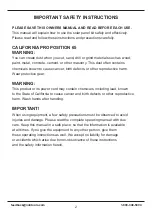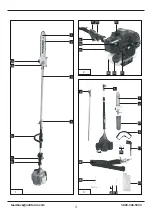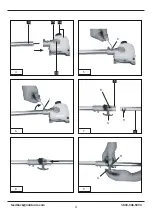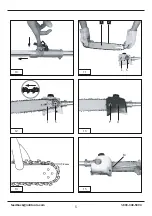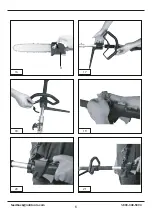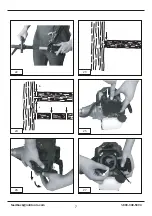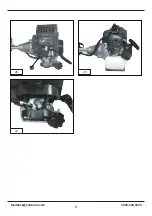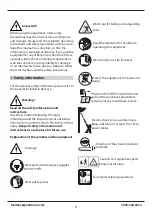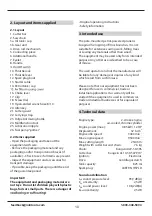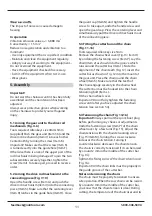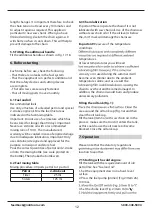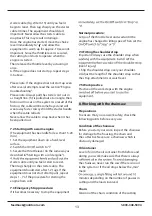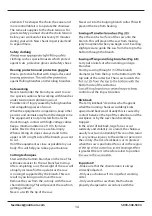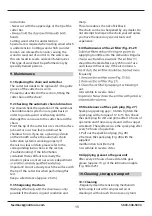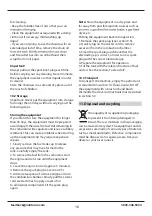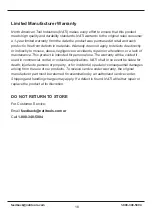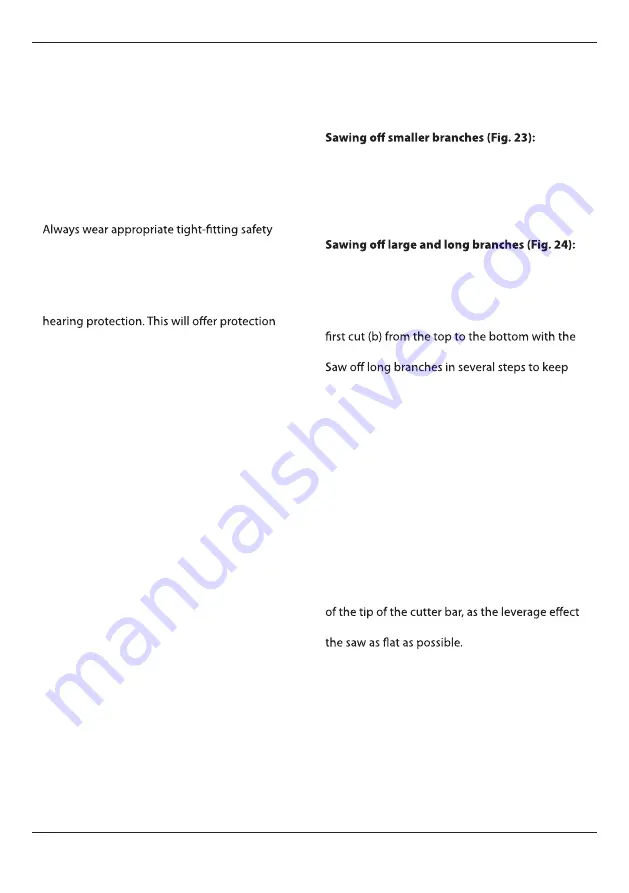
elements: The sharper the chain, the easier and
more controllable it is to operate the chainsaw.
The same also applies to the chain tension. For
greater safety you must check the chain tension
before your work and at least every 10 minutes
during your work. New chains in particular tend
to expand more.
Safety clothing
clothing such as special trousers which protect
against cuts, protective gloves and safety shoes.
Hearing protection and protective goggles
Wear a protective helmet with integral face and
against falling branches and recoiling branches.
Safe working
Never stand under the branch you want to saw.
Use special caution when working with branches
under tension and splintering wood.
Possible risk of injury caused by falling branches
and catapulting pieces of wood.
When the equipment is in operation, keep other
persons and animals away from the danger zone.
The equipment is not protected from electric
shock through contact with high-voltage cables.
Keep a minimum distance of 10 m from live
cables. Electric shock can cause fatal injury.
When working on slopes always stand to the
upper or left or right side of the branch you want
to cut.
Hold the equipment as close as possible to your
body. This will help you to keep your balance.
Cutting techniques
Start with the bottom branches on the tree. This
will make it easier for the cut branches to drop.
After completing a cut, the weight of the saw will
abruptly increase for the operator as the saw
is no longer supported by the branch. This can
result in you losing control over the saw.
Remove the saw from the cut only with the saw
chain still running. This will prevent the saw from
getting jammed.
Never cut with the tip of the saw.
Never cut into the bulging branch collar. This will
prevent the tree from healing.
Place the contact surface of the saw onto the
branch. This will prevent the saw from making
jerky movements when you begin a cut. Exerting
slight pressure, guide the saw from the top to the
bottom through the branch.
Carry out a relief cut when working on large
branches.
Start by sawing through 1/3 of the branch
diameter (a) from the top to the bottom with the
top side of the cutter bar. Then saw towards the
bottom side of the cutter bar.
control over the impact location.
Kick-back
The term „kickback“ describes what happens
when the running chainsaw suddenly kicks
upward and backward. Usually this is caused by
contact between the tip of the cutter bar and the
workpiece or by the saw chain becoming
trapped.
In the event of kickback, large forces occur
suddenly and violently. As a result, the chainsaw
usually reacts uncontrollably. This can often result
in very serious injuries to the worker or persons in
the vicinity. The risk of kickback is at its greatest
when the saw is positioned for a cut in the region
is greatest there. It is therefore safest to position
Important!
•
Make sure that the chain tension is always
correctly adjusted.
• Only use a chains
aw if it is in perfect working
order.
• Only
work with a saw chain that has been
properly sharpened in accordance with the
1-800-348-5004
14
Summary of Contents for BlueMAX 53542
Page 4: ...4 5 4 3a 3b 25 4 6 8 5 K I N G R G H 7 9 1 800 348 5004 feedback natitools com 4...
Page 5: ...2 mm 10 12 14 11 13 15 1 2 L S L P S O M 1 800 348 5004 feedback natitools com 5...
Page 6: ...16 18 20 17 19 21 O 1 800 348 5004 feedback natitools com 6...
Page 7: ...23 25 27 24 26 a b T 22 1 800 348 5004 feedback natitools com 7...
Page 8: ...29 28 30 13 1 800 348 5004 feedback natitools com 8...


